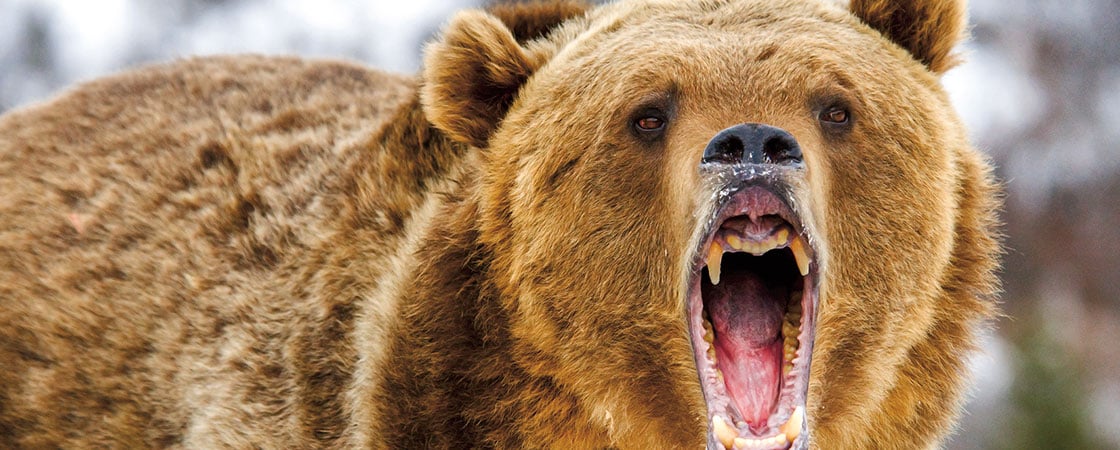By the mid-20th century, scientists had come to understand that grizzlies were not the mindless monsters that the old stories had portrayed them to be. Grizzlies are, in fact, highly intelligent, with keen memories. They are shy and will almost always avoid a human if possible. They will eat nearly anything but tend to favor roots and berries. In Glacier, their favorite treats are plump little rodents called marmots.
To be sure, grizzlies do possess fearsome powers. Their front paws can crack a skull in one swipe. Their knife-sharp, finger-long claws can tear apart tree stumps. Their jaws can chomp through metal and bone. And they can run faster than a galloping horse, swim for hours, and climb high into trees when they want to (which is not often).
But it is unusual for a grizzly to unleash its deadly powers on a human. Normally, a grizzly attacks only if taken by surprise or if it feels threatened. This does happen on occasion, and growing up, John and Steve likely heard horror stories of people being mauled by bears. In 1960, a mother bear had attacked five hikers on a remote trail.
Such stories were rare, though, which is why the boys didn’t feel afraid on that July evening when they spotted grizzly bears sipping cool water from Trout Lake. In fact, the boys felt lucky—privileged—to see one of Earth’s most rare and magnificent creatures in the wild.
It was what happened the next evening that filled them with terror.
The sun hadn’t yet set, and the boys were out on the lake, horsing around on a big pile of floating logs. Suddenly, a strange sound caught their attention. They peered in the direction of their campsite and spotted a skinny grizzly devouring a loaf of their bread. They hoped the bear would leave. But then it started to tear apart their backpacks.
Determined to save their gear, the boys shouted at the bear. They were sure that their voices would scare it off. But no amount of yelling could chase it away.
The boys weren’t grizzly experts, but something about this bear seemed abnormal—and dangerous. They waited until the bear was distracted by a pan of trout they had prepared for dinner, and then they crept to shore. They threw on their boots and fled into the darkening night, praying the grizzly wouldn’t chase after them.
What John and Steve didn’t know was that Glacier was in the midst of a grizzly crisis. Some grizzlies had lost their natural fear of humans and were behaving aggressively. But it was not the bears that were the real problem.
It was people.

